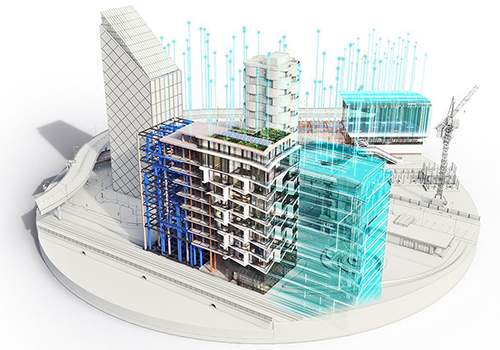Autodesk Tandem and Digital Twins
Autodesk Tandem and the Future of Scalable Digital Twins
 More and more of our clients are looking toward real-time operations, building monitoring, and immersive training environments, the need for connected digital twin solutions continues to grow. Recently, we took a closer look at Autodesk Tandem, a cloud-based digital twin platform designed to bridge the gap between design, construction, and long-term asset management. After reviewing the latest updates announced in June 2025, it is clear that Tandem has matured into a platform worth paying attention to, especially for industries building smarter, more connected spaces.
More and more of our clients are looking toward real-time operations, building monitoring, and immersive training environments, the need for connected digital twin solutions continues to grow. Recently, we took a closer look at Autodesk Tandem, a cloud-based digital twin platform designed to bridge the gap between design, construction, and long-term asset management. After reviewing the latest updates announced in June 2025, it is clear that Tandem has matured into a platform worth paying attention to, especially for industries building smarter, more connected spaces.
Tandem was created to give project stakeholders a clearer view of a building or infrastructure asset’s full lifecycle. It allows users to take BIM models from tools like Revit and IFC, enhance them with asset-specific metadata, and then connect those models to real-time data sources such as IoT sensors and facility systems. The result is a living digital model that evolves with the physical space and becomes a central hub for operations and decision-making.
What Changed in June 2025
In their recent Tandem webinar, Autodesk shared several important updates that push the platform even further into operational territory. The latest version includes improved API access, more flexible data classification templates, and better real-time visualization of operational data. Facility teams can now track asset performance, maintenance cycles, and usage data directly within the digital twin environment.
They also introduced improvements to how Revit and IFC models are imported and managed, streamlining geometry, metadata alignment, and update tracking. These updates are especially valuable for teams that deal with frequent changes to plans, layouts, or systems throughout the lifecycle of a project.
Why This Matters to Our Clients
Across sectors like architecture, infrastructure, and industrial operations, we have consistently heard the same concerns from our clients. Teams want better ways to manage updates, collaborate in real time, and unify data from disconnected systems. Facility owners and operations teams want more visibility into the spaces they are responsible for. And developers want tools that reduce friction, not add more layers to an already complex pipeline.
Autodesk Tandem directly addresses many of these needs. It offers a structured, standards-based environment for maintaining accurate digital twins, while also supporting the flexibility required for live updates and continuous evolution. The platform is especially useful for asset-heavy industries looking to reduce the disconnect between what was built and what is currently operating.
How Apex Engine Complements Tandem
 While Tandem provides a strong foundation for lifecycle data and model consistency, Apex Engine brings in the real-time, interactive layer. That includes immersive visualization, training simulations, and multi-user collaboration built directly into the development environment.
While Tandem provides a strong foundation for lifecycle data and model consistency, Apex Engine brings in the real-time, interactive layer. That includes immersive visualization, training simulations, and multi-user collaboration built directly into the development environment.
This combination opens the door for compelling use cases. Imagine a facility manager walking through a digital twin of their building while seeing real-time energy usage and maintenance status visualized inside Apex. Or a training team simulating emergency responses using live data pulled from Tandem-connected sensors. These kinds of integrations could deliver real value, both for operations and for end users who need more than just static data.
Our goal with Apex Engine has always been to streamline 3D development and make it more connected, scalable, and collaborative. As more clients move into industries that require BIM, IoT, and simulation working side by side, partnerships like this could help bridge the gap between planning and performance.
Looking Ahead
We are continuing to explore possible integrations and collaborative workflows between Apex Engine and platforms like Tandem. Based on the feedback we have received from our clients and community, it is clear that the need for flexible, real-time digital twin systems is growing fast. Tandem is shaping up to be one of the more promising platforms on the lifecycle management side, and we look forward to exploring how Apex can help extend its impact through immersive interaction and real-time simulation.
Call to our Community
If you are already working with Autodesk Tandem, or if you are building systems that rely on digital twin workflows, we would love to hear more about what you need. Our roadmap is shaped by the problems our community brings to us, and this area is only getting more important as we head into 2026.